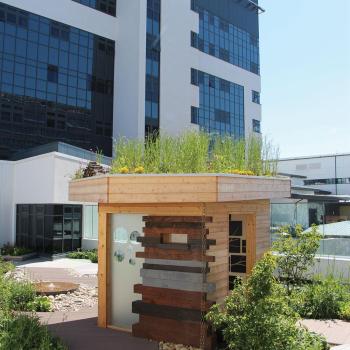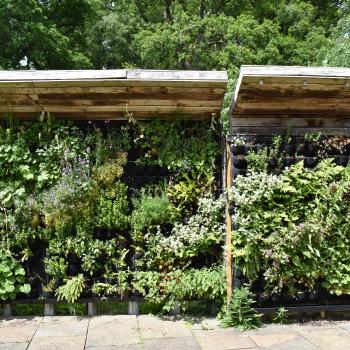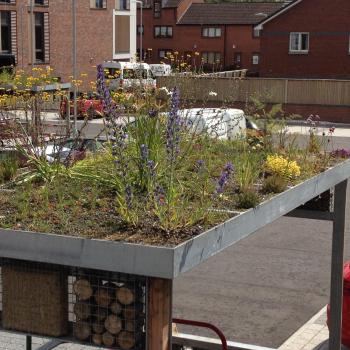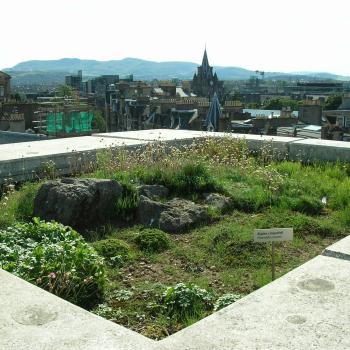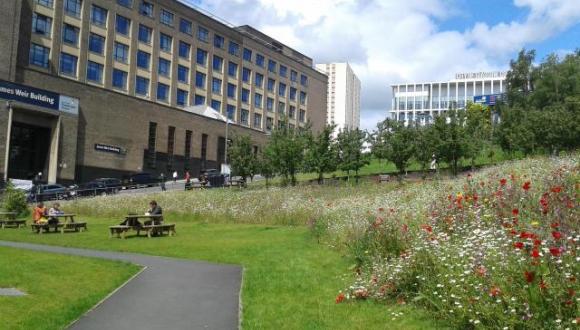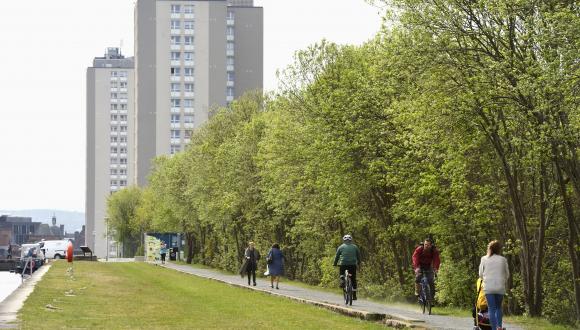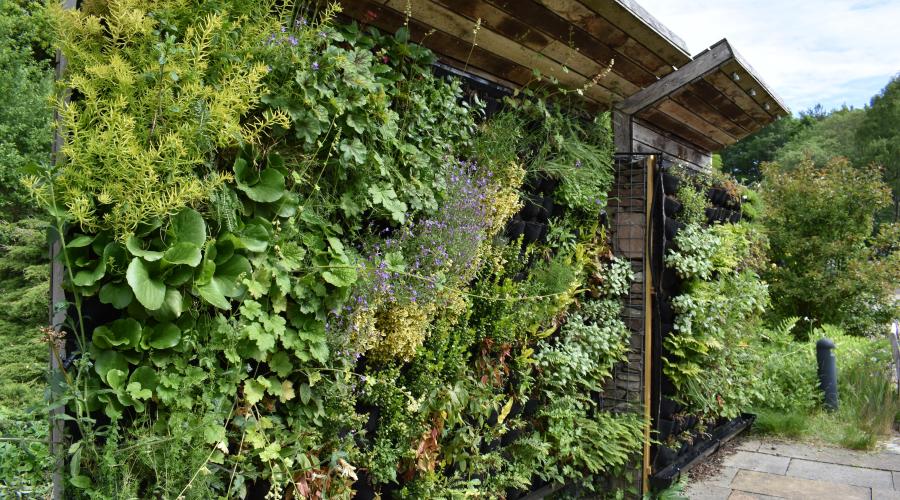
Green roofs and living walls
Including green roofs and living walls in developments can reduce flooding and help biodiversity in urban areas.
Green roofs and living walls are vegetated roofs and walls. They include a multi-layer system designed to intercept and retain rainfall, reducing the volume and flow of runoff.
Green roofs and walls are particularly helpful for tackling urban flooding by;
- Absorbing rainwater
- The vegetation slowing run-off and retaining water
- Allowing water to evaporate back into the atmosphere
- Helping to reduce peak flows
- Retaining and treating contaminates and helping to neutralise acidic rainwater
There are multiple other benefits that come with green roofs and living walls such as;
- Reducing heating and cooling costs by keeping buildings warmer in the winter and cooler in summer
- Acting as stepping stones for wildlife linking areas of greenspace
- Allowing the water to be fed into a grey water system for use within the building
- Lowering urban air temperatures helping to combat the urban heat island effect
- Contributing to a nicer, more pleasing environment to live and work
We have been working with partners to explore the viability of integrating green roofs into an existing development proposal for a residential development at Meadowbank, Edinburgh. The team found that;
- Green roofs at the Meadowbank site would help create an exemplar nature-rich development in the centre of Scotland’s capital city.
- Green roofs would support the health and well-being of residents and provide benefits to the wider community that would use the site.
- Green-blue roofs reduce the need for other grey infrastructure.
- Green-blue roofs allow for more efficient use of land in constrained urban sites.
- Initial capital costs of green roofs are modest compared to overall capital costs of the development.
Find out more
Maximising the benefits of green infrastructure in social housing




